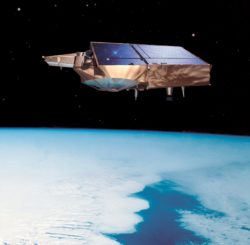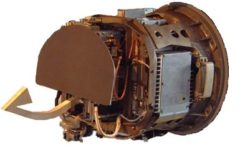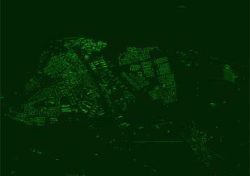Next generation of Synthetic aperture radar processing algorithms to explore earth and universe
Next generation of Synthetic aperture radar processing algorithms to explore earth and universe
It is today possible, from a far distance, to detect for instance a military vehicle hidden under camouflage. How is this possible? Here you find an overview of the research making it possible. We also present how our research project hopefully can contribute to an improvement of the techniques used in the area.
PROJECT FOCUS
The research within this project focuses on increasing the signal processing performance of space time synthetic-aperture radar. Especially, the objective is to develop signal processing algorithms for future ultra-wideband systems in comparison to the narrowband systems used today. The future systems will have much higher image resolution, better detection capabilities as well as the speed or change estimate will be more accurate.
The research will be based on real data from our different partners, which are Saab Electronic Defence System, Saab Bofors Dynamics, RUAG Space and the Swedish Defence Research Agency (FOI). Saab Microwave Systems and FOI are considered to be world leading within the field of low frequency Ultra Wide Band SAR.
BACKGROUND
Radar systems have been used for a long time, both in military and civil applications, such as for surveillance, remote sensing, ship navigation or air control. Today, radar systems cover short range hand held systems (finding buried objects) to satellite based large range systems (monitoring Earth from space or other planets in missions to the solar systems). Radar systems can be either air based or space based. Electro-optical sensor systems can be used as a compliment to radar systems.
SAR IMAGES AND SPACE TIME
One important part within radar systems is the SAR systems. SAR stands for Synthetic Aperture Radar. At the first glance SAR images do not seem to differ from common optic pictures. However SAR images have a lot of advantages.
Radar is outstanding in measuring changes and movements compared to optical sensors. This is possible because one can combine SAR with space time processing.
Radar is also unaffected by weather conditions, while the quality of optic pictures is decreased due to clouds, rain or lack of daylight.
SPACE TIME PROCESSING
Space time processing means that an area is studied regarding change over time.
This can be done in two ways.
- One way is through repeated radar measurements where you look at the difference between the measurements. This is suitable for very slow movements such as glacier movements or movements caused by Earthquakes.
- Another way is by detecting movements during a single radar measurement. The SAR processing is combined with multi channel array processing. This is suitable for faster movements such as a vehicle moving. The result is that you from a satellite can monitor changes on the surface of the earth with millimeter resolution.
Facts
Duration
2010-2013
Contact Person
Participants

Mats Pettersson
Professor


